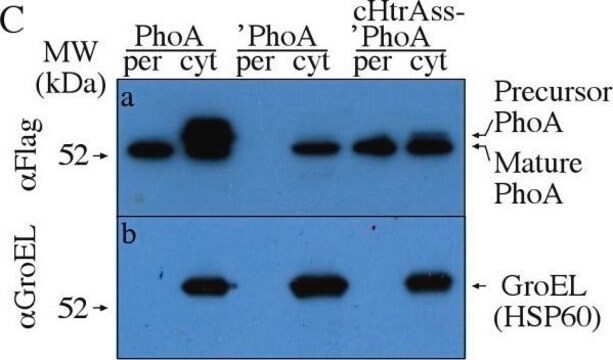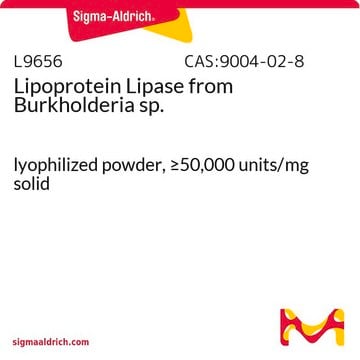A2179
Anti-Mouse IgG (Fab specific)–Alkaline Phosphatase antibody produced in goat
affinity isolated antibody, buffered aqueous solution
Synonim(y):
Goat Anti-Mouse IgG (Fab specific)–AP
About This Item
Polecane produkty
pochodzenie biologiczne
goat
białko sprzężone
alkaline phosphatase conjugate
forma przeciwciała
affinity isolated antibody
rodzaj przeciwciała
secondary antibodies
klon
polyclonal
Postać
buffered aqueous solution
reaktywność gatunkowa
mouse
spodziewany brak reakcji z
horse, human, bovine
metody
direct ELISA: 1:40,000
immunohistochemistry (formalin-fixed, paraffin-embedded sections): 1:25
western blot (chemiluminescent): 1:80,000
Warunki transportu
wet ice
temp. przechowywania
2-8°C
docelowa modyfikacja potranslacyjna
unmodified
Szukasz podobnych produktów? Odwiedź Przewodnik dotyczący porównywania produktów
Opis ogólny
Immunogen
Zastosowanie
- western blotting
- immunoblotting
- enzyme linked immunosorbent assay (ELISA)
- immunohistochemistry
Działania biochem./fizjol.
Inne uwagi
Postać fizyczna
Uwaga dotycząca przygotowania
Oświadczenie o zrzeczeniu się odpowiedzialności
Not finding the right product?
Try our Narzędzie selektora produktów.
Kod klasy składowania
12 - Non Combustible Liquids
Klasa zagrożenia wodnego (WGK)
WGK 2
Certyfikaty analizy (CoA)
Poszukaj Certyfikaty analizy (CoA), wpisując numer partii/serii produktów. Numery serii i partii można znaleźć na etykiecie produktu po słowach „seria” lub „partia”.
Masz już ten produkt?
Dokumenty związane z niedawno zakupionymi produktami zostały zamieszczone w Bibliotece dokumentów.
Nasz zespół naukowców ma doświadczenie we wszystkich obszarach badań, w tym w naukach przyrodniczych, materiałoznawstwie, syntezie chemicznej, chromatografii, analityce i wielu innych dziedzinach.
Skontaktuj się z zespołem ds. pomocy technicznej




![Tributyl[(methoxymethoxy)methyl]stannane AldrichCPR](/deepweb/assets/sigmaaldrich/product/structures/405/394/e2659ee0-7927-4ef9-b0bc-dc331065f409/640/e2659ee0-7927-4ef9-b0bc-dc331065f409.png)



